
Three key strategies for improving efficiency in civil engineering
Civil engineering projects are typically recognised as prominent public sector undertakings characterised by their considerable scale and intricacy. Because these projects have so many parts, keeping a close and immediate watch on everything is important. This helps to ensure the project is finished on time and doesn’t cost more than planned.
By making your processes digital, your business can run more smoothly, from working out costs to planning and sorting out resources and ensuring data is shared and analysed easily. This helps you stick to your expected profit margins. But how do you start, and what can you turn digital? In this blog, we’ll discuss three key digital tools that can really help efficiency in civil engineering businesses.
Tip 1. Maximise Efficiency in Plant and Equipment Usage
It is crucial to gain complete oversight of your plant and equipment. This includes having a clear understanding of their availability, costs, locations, and bookings. Additionally, it’s important to monitor their billing status, operational status, and any associated resources. Such comprehensive monitoring ensures that your resources are used as efficiently as possible. To achieve this, various tools and systems are available that can help you manage your plant and equipment effectively.
When selecting a system to assist with this management, it’s important to consider options that integrate smoothly with a comprehensive ERP (Enterprise Resource Planning) system. This integration should allow for various functions, from purchasing an asset, registering it as plant equipment, tracking purchase and depreciation costs, and setting up and recording key operational data. This includes safety information, barcodes, and precise locations. The ideal system would also facilitate its use in projects, handle processing plant equipment requests, manage resource allocation, and oversee equipment hiring and returning process, all while accurately posting and tracking associated costs.
Tip 2. Keep on top of project resources
Staying on top of resource planning is key to the success of any project. It involves the intricate balancing of materials, plant, and personnel, ensuring that everything is available precisely when needed. This complex task can be significantly streamlined and made more efficient using digital tools. These tools allow for creating personalised, graphical presentations of resource plans tailored to meet the specific needs of different roles within a business. This visual approach to resource planning makes it easier to comprehend and manage the various components of a project.
Digital tools also offer the flexibility to view schedules from multiple perspectives, such as progress, resources, dates, projects, tasks, or clients. This multifaceted view aids in a comprehensive understanding of the project’s status and needs. Moreover, opting for a planning solution that fully integrates with, or is a part of, your comprehensive ERP system is advisable. Such integration provides real-time visibility into all aspects of your project, enabling prompt and informed adjustments as necessary. This real-time insight is crucial for maintaining the smooth operation of your project and ensuring its timely and successful completion.
Tip 3. Ensure Correct Project Estimates Upfront
Estimating is a fundamental step in formulating an accurate budget, which serves as a roadmap for project implementation. When estimating is based on assumptions, rushed judgments, or insufficient overview, the likelihood of not meeting expected profit margins increases. This is because inaccurate estimates can lead to budget overruns or underfunding critical aspects of the project. It’s important to base estimates on detailed, reliable information to avoid such pitfalls.
Adopting an Enterprise Resource Planning (ERP) solution with a robust and flexible estimating tool can be a game changer. Such a tool allows for a quick and thorough understanding of the real costs associated with a project. This insight is vital for preparing accurate quotations, ensuring you can respond promptly and effectively to tender opportunities. With precise estimating capabilities, you can set realistic budgets that reflect true project costs, helping to safeguard your desired margins and enhancing the overall success of your project.
Choose an integrated software solution
Several digital solutions available can significantly boost the efficiency in civil engineering businesses. Are you interested in discovering more tools that could streamline your operations? Our guide, ‘5 Top Challenges in Civil Engineering Projects and How Tech Can Solve Them’, offers valuable insights. It explores common hurdles faced in the industry and demonstrates how technology can provide effective solutions. By downloading this whitepaper, you’ll gain access to expert advice on optimising your processes and overcoming typical project challenges through innovative digital tools. Don’t miss these essential tips for advancing your civil engineering projects.
-
Share:

Paul Broderick | Paul has developed a keen eye for seeing specific customer requirements and recommending solutions to deliver business benefits and returns-on-investment. In the last three years Paul has focused this experience and knowledge specifically on the Construction industry, where digitisation is now the hot topic in IT, which has evolved and matured to become most relevant in today’s construction industry.

